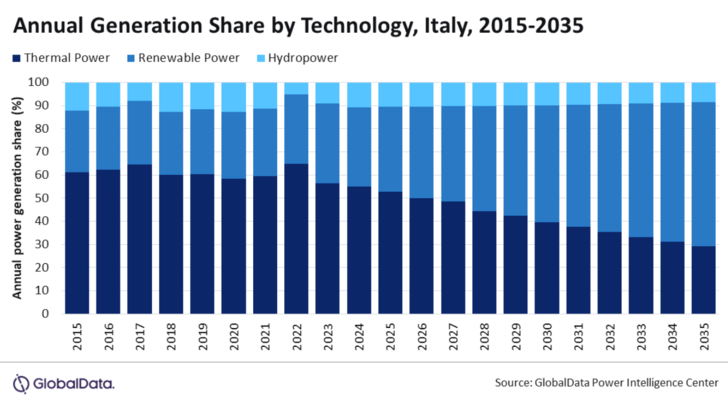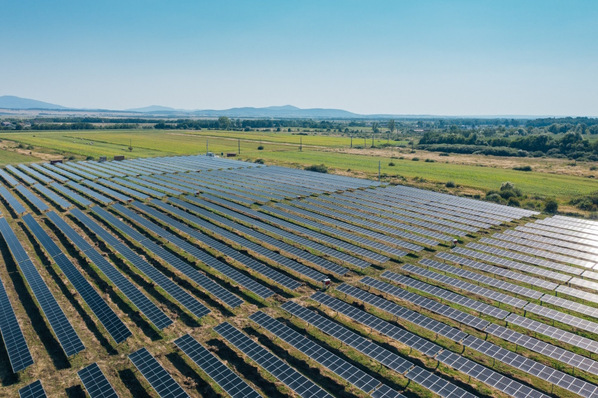The Russian invasion of Ukraine has had a profound impact on the global energy market. The over reliance of European nations on Russian fossil fuels has posed a significant challenge to supply security. Italy, as one of the largest importers of natural gas, sourced 40% of its gas from Russia until 2021. However, in 2022, Italy reduced its dependence on Russian imports to 19% of its total natural gas imports.
Against this backdrop, Italy is projected to achieve a cumulative installed capacity of 162.7GW from renewable sources by 2035, with the share of renewables increasing to 69% in its power capacity mix, according to GlobalData, a leading data and analytics company.
Severe drought impacted hydropower generation
GlobalData’s latest report, “Italy Power Market Size, Trends, Regulations, Competitive Landscape and Forecast, 2024-2035” reveals that Italy is expected to have 107.7GW of renewable capacity by 2030, with the share of renewables in total annual generation reaching around 59% by 2030.
Sudeshna Sarmah, Power Analyst at GlobalData, comments: “The severe drought in 2022 significantly impacted Italy’s power market, as hydropower generation decreased from 31.2TWh in 2021 to 13.7TWh in 2022. In the absence of nuclear power, the country increased its thermal power generation by 8.4%, rising from 163.4TWh in 2021 to 177.1TWh in 2022. Additionally, electricity imports reached a total of 47.4 TWh.”
Eliminating coal-powered plants by 2025
In 2022, the Italian government introduced the “National Plan for the Containment of Natural Gas,” aimed at reducing the country’s natural gas consumption. As a supplementary measure, Italy has begun importing natural gas from Azerbaijan, Algeria, and Libya. While this provides temporary relief, the nation must focus on enhancing its renewable energy capacity to achieve self-sufficiency. In 2023, Italy revised its renewable energy generation objective, setting a new target of achieving 65% by 2030.
Also see: Italy: Strategic joint-venture for 2 GW PV projects
Sarmah adds: “The upgrade of renewable targets should also come up with robust measures and a clear roadmap with definitive objectives to achieve them and overcome its dependency on natural gas and electricity imports.”
Also interesting: “Italian PV-sector needs regulatory certainty”
Sarmah concludes: “Italy remains committed to eliminating coal-powered plants by 2025. The government aims to strengthen its national grid and prioritize the swift development of renewable energy sources. Additionally, the country is expected to revise its National Energy and Climate Plan (NECP). The current target outlined in the NECP is to reach 93.2GW of renewable power capacity by 2030, with solar PV systems expected to contribute 50GW and wind power slated to provide 19.3GW.” (hcn)








